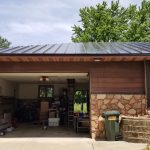Judy Woodruff: Next, we turn to Morocco, home to the largest solar energy plant in the world.
Today, the planet Earth meets over 80 percent of its energy needs with either coal, oil or gas. But as climate science and breakthrough technology disrupt the energy sector, Morocco is taking advantage of an abundant natural resource, unobstructed sunlight, to power part of the North African nation.
Special correspondent Monica Villamizar looks at a giant $9 billion project.
It’s part of our ongoing series, Peril and Promise, on the challenge of climate change.
Monica Villamizar: Glimmering in the Sahara Desert, a first-of-its-kind solar energy plant.
Noor, which means light in Arabic, is so vast, it can be seen from space. From the air, it’s an ocean of reflective mirrors, but on the ground, as we drive into Noor, sunglasses are mandatory protection from the blinding rays.
Mustapha Ibarritane: I like it. It’s a great project, great opportunity.
Monica Villamizar: Twenty-eight-year-old Mustapha Ibarritane is part of the team of local engineers working for the project. Noor is owned by the state of Morocco and built by Spanish company SENER. The project is based in Ouarzazate, a tiny tourist town at the edge of the desert.
Mustapha Ibarritane: In Morocco, we don’t have petrol, we don’t have gas. To be independent, to have our own energy, we have chosen to use clean energy, because of the climate change challenge.
Monica Villamizar: Morocco does have sunlight, about 3,000 hours of sun every year. And harnessing that light is an evolutionary leap for the country.
Mustapha Ibarritane: Right now, it’s the most popular solar plant in the world. I’m proud to be part of this project.
Monica Villamizar: Noor uses CSP, or concentrated solar power. Concave mirrors direct the sun to a middle tube to heat an oil solution. The mirrors rotate as the sun moves, like sunflowers. The heated fluid, which reaches 750 degrees Fahrenheit, produces steam to power a turbine.
Read the rest of the transcript or listen to the audio here.





